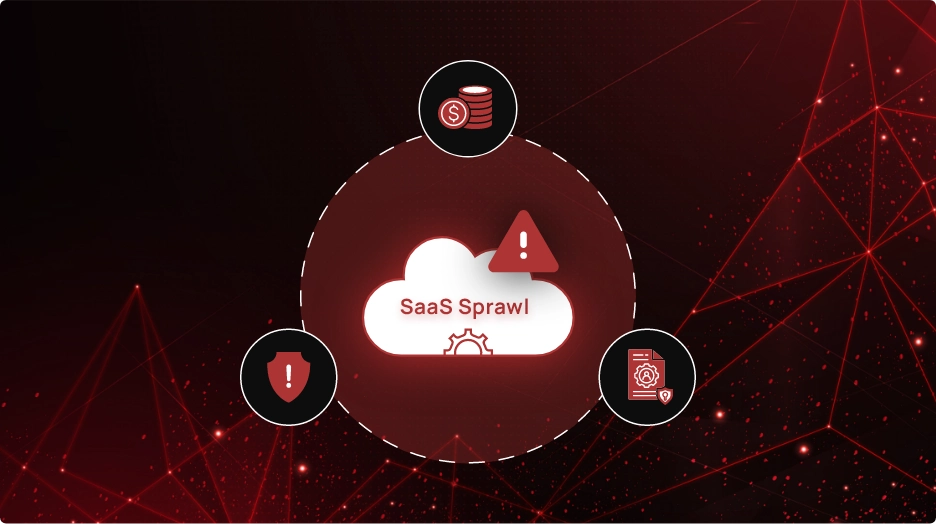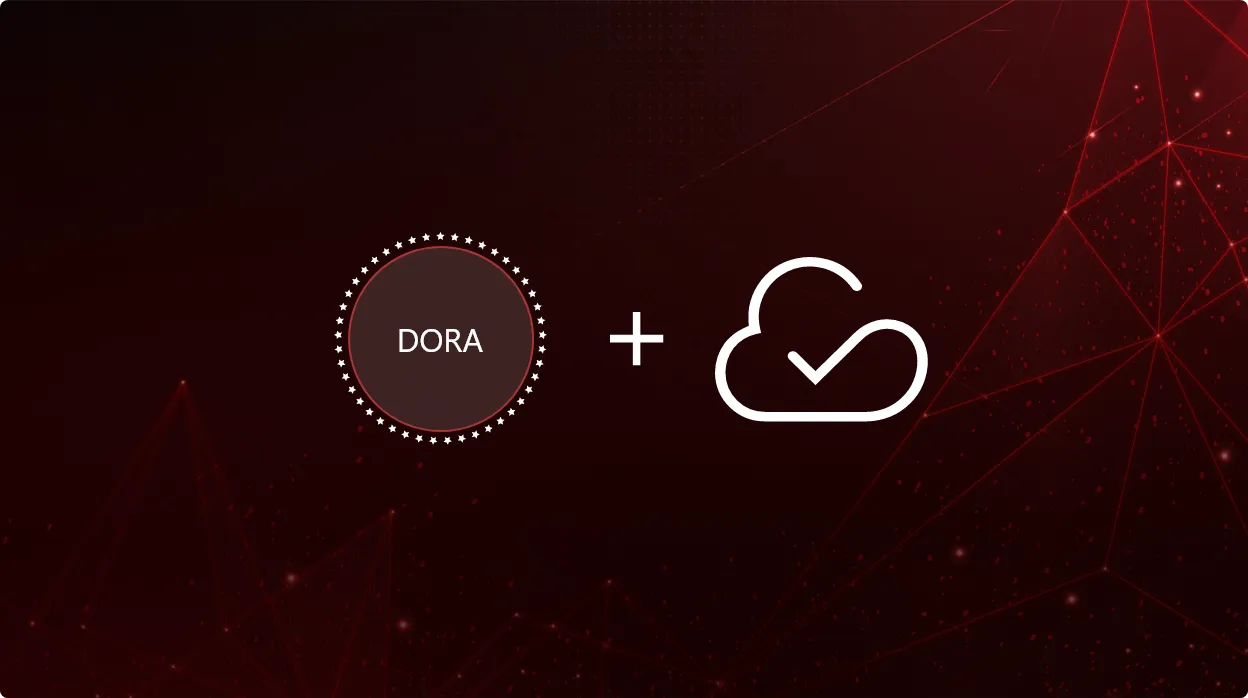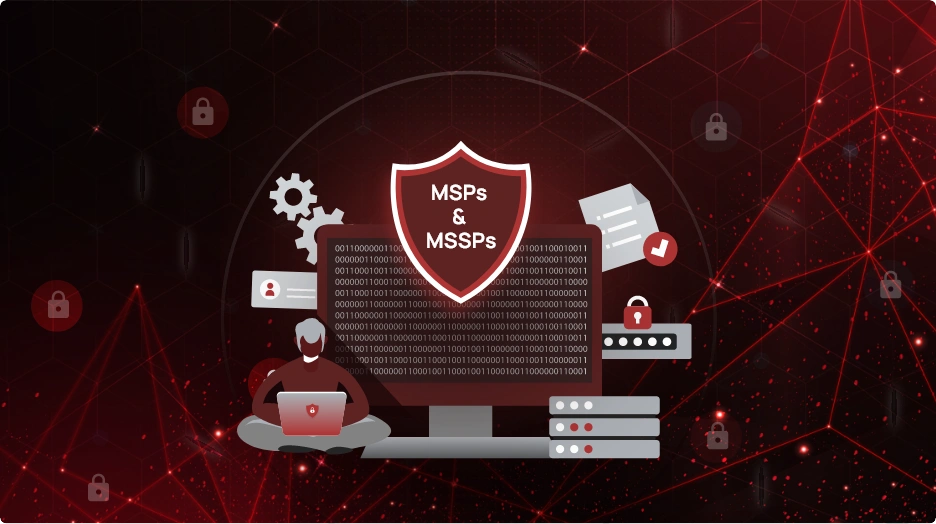SaaS Sprawl – Why You Should Be Concerned

Software as a Service (SaaS) is a cloud-based delivery model that allows businesses to access various applications over the internet, without having to install, maintain, or update them on their own devices. SaaS offers many benefits for businesses, such as scalability, flexibility, cost-effectiveness, and innovation.
However, SaaS also comes with some challenges, especially when it is not managed properly. One of the most common and critical challenges is SaaS sprawl, which is the uncontrolled proliferation of SaaS applications in an organization, often without proper oversight and governance. SaaS sprawl can pose serious risks to data security, compliance, cost, visibility, and integration.
Risks and Challenges of SaaS Sprawl
SaaS sprawl can happen for various reasons:
- SaaS applications can be easily adopted by anyone in the organization, without requiring IT approval or involvement. Different departments, teams, and individuals may have different needs and preferences for SaaS applications, leading to a variety of SaaS solutions in use.
- SaaS applications may not be visible or tracked by the IT department, as they are hosted and managed by third-party providers.
- Shadow IT, which is the unauthorized or unregulated use of IT resources, can contribute to SaaS sprawl, as users may bypass IT policies and procedures to acquire and use SaaS applications.
SaaS sprawl can have negative consequences on different facets of an organization, such as:
Data Security and Privacy
SaaS applications store and process sensitive data, such as customer information, financial records, intellectual property, and personal data. SaaS sprawl can increase the risk of data breaches, data loss, data leakage, and data misuse, as SaaS applications may not have adequate security measures, or may not comply with the organization’s security standards and policies. Moreover, SaaS applications may not adhere to the data protection regulations and laws of the regions where the data is stored or processed, such as the General Data Protection Regulation (GDPR) or the California Consumer Privacy Act (CCPA).
Compliance and Governance
SaaS applications may not comply with the organization’s compliance and governance requirements, such as auditability, accountability, and transparency. SaaS sprawl can make it difficult to monitor and enforce the compliance and governance policies for SaaS usage, such as who can access what data, how data is used and shared, and how data is retained and disposed. Moreover, SaaS applications may not comply with the industry-specific regulations and standards, such as the Health Insurance Portability and Accountability Act (HIPAA) or the Payment Card Industry Data Security Standard (PCI DSS).
Visibility and Control
SaaS applications are hosted and managed by third-party providers, which can reduce the visibility and control of the organization over its IT assets and resources. SaaS sprawl can make it difficult to discover and inventory all the SaaS applications in use, and to assess and optimize their performance, availability, and reliability. Moreover, SaaS sprawl can make it difficult to manage and mitigate the risks and issues associated with SaaS applications, such as security incidents, service disruptions, or vendor lock-in.
Integration and Interoperability
SaaS applications may not integrate or interoperate well with each other, or with the existing IT infrastructure and systems. SaaS sprawl can create silos of data and functionality, which can hamper the collaboration and productivity of the organization. Moreover, SaaS sprawl can create complexity and inconsistency in the IT environment, which can affect the quality and efficiency of the IT services and processes.
SaaS Security Posture Management – A Solution for SaaS Sprawl
SaaS Security Posture Management (SSPM) is a new approach to cybersecurity that focuses on the security posture of SaaS applications, rather than the network perimeter. SSPM tools can help organizations monitor and manage their SaaS applications, and identify and remediate security gaps and misconfigurations.
Here’s how:
- SSPM tools can help organizations assess and optimize the security posture of each SaaS application, helping identify and remediate security gaps and misconfigurations, such as excessive permissions, misconfigurations, or unauthorized access.
- SSPM tools can help ensure that SaaS apps comply with regulations. They also help audit and report on the compliance and governance status of SaaS applications, and provide documentation for audits and reviews.
SSPM is a new and emerging solution for SaaS sprawl, and it can provide a comprehensive and holistic approach to manage SaaS applications, and improve their security, compliance, cost, visibility, and integration. SSPM can also help organizations leverage the benefits of SaaS, without compromising the risks.
CheckRed – A Comprehensive SSPM Tool
CheckRed is an example of a comprehensive SSPM tool that can help businesses improve their SaaS security posture, and address the challenges and risks of SaaS sprawl. CheckRed can provide the following features and benefits for businesses:
Enhance your HIPAA compliance with these security tips:
- Gain complete visibility over the SaaS landscape
- Optimize security posture of SaaS applications
- Ensure regulatory compliance
- Identify misconfigurations and potential risk factors
- Get detailed remediation workflows
CheckRed can help businesses integrate and orchestrate their SaaS applications, and improve their collaboration and productivity. CheckRed is a comprehensive SSPM tool that can help businesses improve their SaaS security posture, and address the challenges and risks of SaaS sprawl. CheckRed can help businesses leverage the benefits of SaaS, without compromising the risks.
SaaS sprawl is a serious and growing challenge for businesses, as it can compromise their security, compliance, cost, visibility, and integration. SaaS sprawl can happen for various reasons, and it is essential to adopt a SaaS management strategy, which involves discovering, monitoring, managing, and optimizing SaaS applications, and ensuring their security, compliance, governance, and integration.


